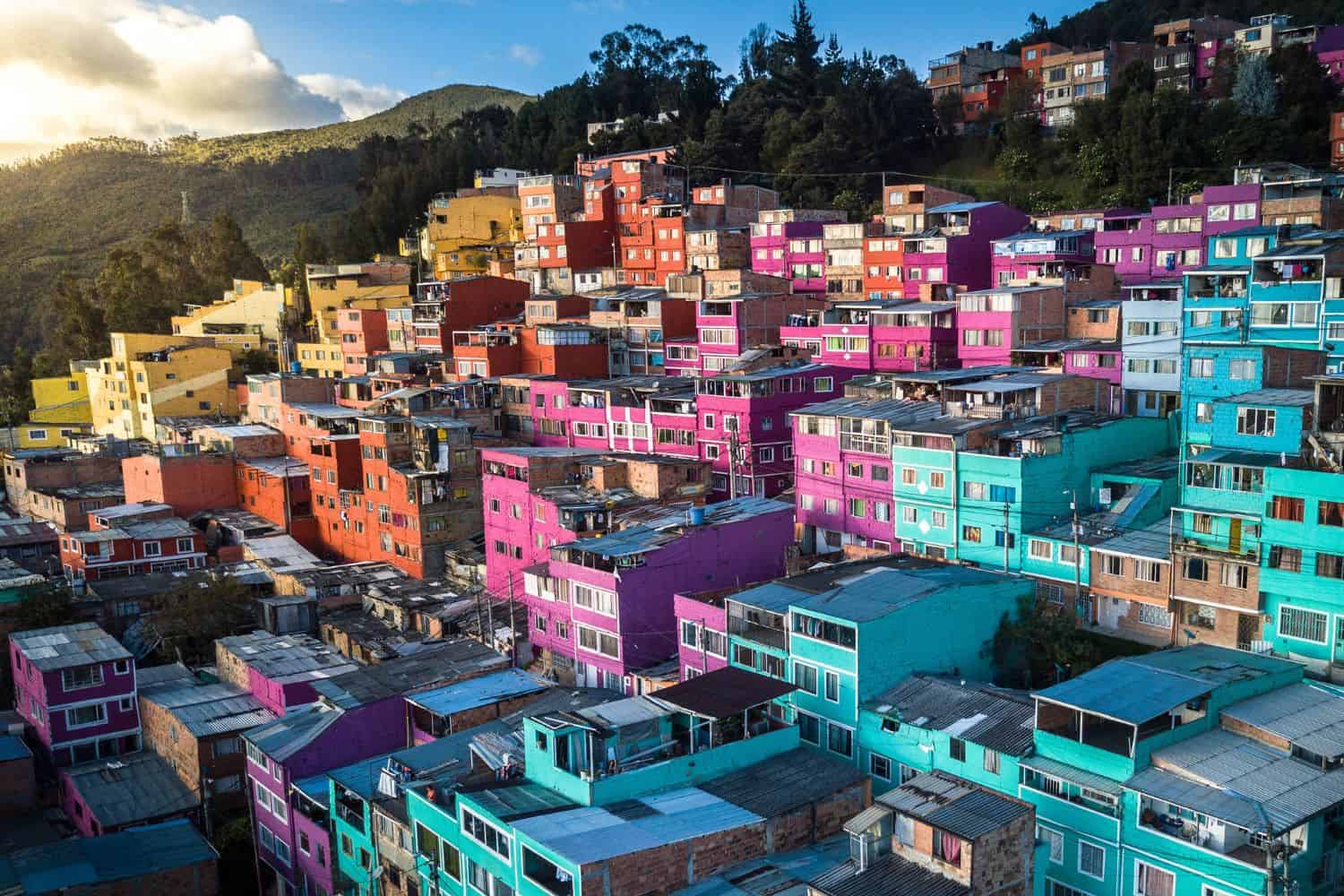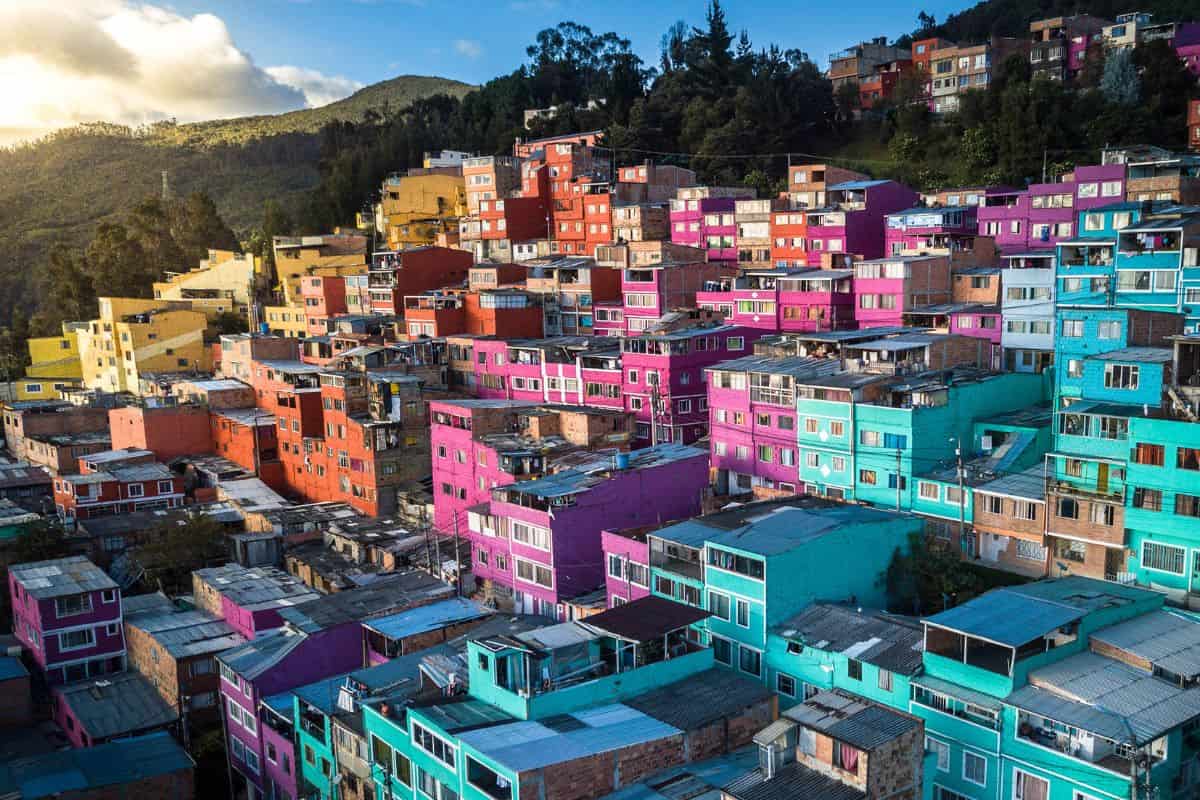Table of Contents
The geography of Colombia is a captivating blend of diverse landscapes and historical significance. Situated in South America, this nation’s geographic location has played a pivotal role in shaping its history and cultural identity.
Nestled between the Pacific Ocean and the Caribbean Sea, Colombia geography beckons adventurous travelers with its lush rainforests, soaring Andean peaks, and vibrant cities. From exploring the majestic Sierra Nevada de Santa Marta to uncovering the cultural tapestry of Bogotá, Colombia’s diverse landscapes and rich history offer an unforgettable journey for intrepid tourists seeking a unique and enriching experience.
The physical geography of Colombia paints a picture of awe-inspiring natural masterpieces. From the breathtaking Amazon rainforest, a testament to the country’s rich biodiversity, to the diverse ecosystems that range from deserts to cloud forests, Colombia stands as a testament to nature’s grandeur.
Top Geographic Features of Colombia
- Andes Mountain Range: The majestic Andes range spans across much of Colombia, shaping its topography and influencing climate patterns.
- Magdalena River: One of Colombia’s major rivers, the Magdalena flows through the central part of the country, providing crucial water resources for agriculture and irrigation.
- La Guajira Peninsula: This arid desert region located in the northernmost part of Colombia is characterized by its sandy landscapes and unique Wayuu culture.
- Amazon Rainforest: A portion of this vast tropical rainforest extends into southern Colombia, holding significant biodiversity and ecological importance.
- Nevado del Ruiz: This active stratovolcano in the Andes is known for its snow-capped peak and is part of the Los Nevados National Natural Park.
- Caño Cristales: Often referred to as the “River of Five Colors,” this river in the Serranía de la Macarena province is famous for its striking colors, especially during certain times of the year.
- Cauca River: Another important river in Colombia, the Cauca River flows through the western part of the country and is vital for irrigation and agriculture.
- Tayrona National Natural Park: Located on the Caribbean coast, this park is known for its beautiful beaches, lush rainforests, and rich indigenous history.
- El Cocuy National Park: This park in the Andes features stunning glaciers, lakes, and peaks, offering a unique natural wonder in Colombia.
- Chocó Rainforest: Located on the Pacific coast, this biodiverse rainforest is one of the wettest places on Earth and is home to many endemic species.
These geographic features play a crucial role in shaping Colombia’s landscape, climate, and cultural history, making them essential elements in defining the country’s geography.
Colombia Geography
Discovering the Colombia National Geographic canvas unveils a captivating array of geographic features. From towering mountain ranges to arid deserts and lush valleys, the country presents a mesmerizing tapestry of natural wonders.
- Mountain Ranges – The Crown of Diversity: Similar to documentaries that often feature towering mountain ranges, Colombia boasts the majestic Andes and the Sierra Nevada de Santa Marta ranges. These rugged peaks not only enhance the country’s scenic beauty but also offer unique biodiversity and have influenced its cultural identity.
- Lakes – A Kaleidoscope of Colors: Colombia’s El Cocuy National Park, with its six stunning turquoise lakes, resembles the picturesque landscapes captured in photographs. These crystal-clear lakes, surrounded by rocky cliffs, reflect the region’s geological richness.
- Deserts – Undulating Sands of Time: Just as desert features highlight vast sandscapes, Colombia’s Tatacoa Desert showcases undulating sand dunes and extreme temperatures. This arid region tells stories of resilience and adaptation in the face of nature’s challenges.
- Historical Sites – Unveiling the Past: Colombia historical sites, like the Lost City (Ciudad Perdida), evoke memories of explorations that uncover ancient civilizations. The remnants of ancient civilizations stand as a testament to the country’s rich heritage.
- Ethnic Diversity – A Cultural Melting Pot: Similar to the National Geographic focus on diverse cultures, Colombia is a tapestry of ethnic groups, including Mestizos, Afro-Colombians, Indigenous peoples, and Europeans. Each group contributes unique traditions, languages, and customs, creating a vibrant cultural mosaic.
- Wildlife – A Sanctuary for Nature: Colombia’s protected areas, such as the Amazon Rainforest, mirror the coverage of wildlife conservation. These regions serve as crucial habitats for diverse flora and fauna, preserving biodiversity in a challenging environment.
- Geological Marvels – A Natural Showcase: The country’s geological wonders, like the Chicamocha Canyon, showcase Colombia’s geological diversity. Such natural formations demonstrate the country’s rich natural heritage.
- Remote Exploration – Uncharted Territories: The remote and isolated Amazon Basin beckons adventurers, much like quests into uncharted territories. This vast expanse of tropical rainforest offers a glimpse into untouched landscapes and ancient cultural connections.
Colombia geographic features are marked by the dominating presence of the Andes and Sierra Nevada de Santa Marta mountain ranges. These majestic peaks, some exceeding 5,000 meters in elevation, create a breathtaking backdrop for the nation’s diverse topography. The Magdalena River, Colombia’s principal waterway, meanders through its terrain, playing a crucial role in transportation and irrigation. Additionally, the vast plains of the Llanos and the dense jungles of the Amazon Rainforest add to the country’s unique geography.
Colombia Geographic Location
Colombia geographic location holds significant strategic importance, playing a pivotal role throughout its history. Positioned at the crossroads of the Americas, the country has facilitated the exchange of goods, ideas, and cultures between North and South America, leaving a lasting mark on its historical significance.
Borders of Colombia
Colombia shares its borders with several countries, and here is an overview of Colombia physical geography with its neighboring nations and the approximate total length of each border:
- Venezuela: The border between Colombia and Venezuela is approximately 2,219 kilometers long, establishing a significant connection in South America.
- Brazil: The border between Colombia and Brazil spans approximately 1,644 kilometers, highlighting Colombia’s position in the heart of the continent.
- Peru: The border between Colombia and Peru extends approximately 1,496 kilometers, emphasizing Colombia’s role in the Andean region.
- Ecuador: The border between Colombia and Ecuador is approximately 590 kilometers long, fostering cultural and economic ties between the two nations.
- Panama: Colombia shares a relatively short border with Panama, stretching approximately 225 kilometers, facilitating trade and regional cooperation.
Colombia geographic location is characterized by its diverse borders, connecting it to various countries across South America and highlighting its significance in regional cooperation and cultural exchange.
| Colombia Neighboring Country | Border Length (Approximate) |
|---|---|
| Venezuela | 2,219 kilometers |
| Brazil | 1,644 kilometers |
| Peru | 1,496 kilometers |
| Ecuador | 590 kilometers |
| Panama | 225 kilometers |
These international borders define Colombia’s connections to different regions and contribute to the country’s geopolitical significance as a crossroads between South America and Central America.
Geography of Bogotá Colombia
As the capital city of Colombia, Bogotá is a captivating microcosm of the country’s human geography. Here, various ethnic groups, including Mestizos, Afro-Colombians, Indigenous peoples, and European descendants, coexist, contributing to the city’s vibrant cultural tapestry.
Bogotá, the capital city of Colombia
- City of Contrasts: Bogotá is known for its stark contrasts, where modern developments coexist with traditional neighborhoods, creating a unique blend of old and new.
- Bogotá River: The Bogotá River flows through the city, providing water for irrigation and contributing to the city’s agriculture.
- Bogotá’s Elevation: The city is located at a high elevation, approximately 2,640 meters (8,660 feet) above sea level, nestled in the Andean mountains.
- Green Spaces: Bogotá is home to several beautiful parks and plazas, including Simón Bolívar Metropolitan Park, offering a serene escape amidst the bustling city.
- Bogotá’s Historical Significance: With a history dating back to pre-Columbian times, Bogotá has witnessed various civilizations and played a pivotal role in the country’s history.
- Diverse Architecture: The city showcases a diverse architectural heritage, reflecting influences from Spanish colonial, indigenous, and modern styles.
- Snow-Capped Mountains: During the colder months, the surrounding Andean peaks, including the nearby Monserrate, are often covered in snow, adding to the city’s picturesque landscape.
- La Candelaria Historic District: The historic La Candelaria neighborhood, with its colonial-era buildings and narrow streets, is an iconic symbol of the city’s cultural richness.
- Bogotá’s Economy: The city serves as Colombia’s economic and cultural hub, attracting people from all over the country seeking opportunities and education.
- Population Growth: Bogotá has experienced rapid population growth, with a significant influx of people from rural areas, leading to urbanization and infrastructure challenges.
Historical Geographical Importance of Colombia
Throughout the ages, Colombia’s geographical significance has made it a sought-after stage for historical drama. As empires rose and fell, from the indigenous civilizations to Spanish colonial rule and beyond, Colombia geographic position played a pivotal role in shaping the history of the Americas.
- Strategic Crossroads: Colombia geographic location at the crossroads of South America, Central America, and the Caribbean has made it a strategic point for trade, cultural exchange, and historical events throughout history.
- Ancient Trade Routes: Pre-Columbian trade routes passed through Colombia, connecting various indigenous cultures and facilitating the exchange of goods, ideas, and cultures.
- Spanish Conquest: Colombia was a key part of the Spanish conquest of the Americas in the 16th century as they sought to expand their empire westward.
- Piracy in the Caribbean: During the colonial era, Colombia’s Caribbean coast was a hotspot for pirate activity, with notable figures like Sir Francis Drake raiding Spanish settlements.
- Independence Movements: Colombia’s geographic diversity played a significant role in the independence movements of the early 19th century, as revolutionary forces fought for freedom from Spanish colonial rule.
- Panama Canal Connection: The construction of the Panama Canal in the early 20th century further emphasized Colombia’s strategic importance, as it connected the Atlantic and Pacific Oceans.
- Influence of Indigenous Empires: Colombia was home to several indigenous empires, including the Muisca and Tairona, which left lasting cultural and archaeological legacies.
- Colonial Architecture: Spanish colonial architecture and influence can be seen throughout Colombia’s cities, shaping its culture and history.
- Natural Wonders: Colombia’s diverse geography, including its Andean mountain ranges, lush rainforests, and coastal regions, has contributed to its rich biodiversity and unique ecosystems.
- Influence of Coffee and Agriculture: Colombia’s fertile lands have made it a major player in global coffee production and agriculture, shaping its economy and trade relationships.
The geographical position of Colombia is a treasure trove of beauty and historical importance. With its stunning landscapes, rich cultural heritage, and historical significance, this South American nation continues to capture the world’s imagination. Despite challenges, Colombia remains a compelling destination for travelers and explorers drawn to its natural wonders and historical intrigue.
In conclusion, Colombia’s geographical significance has made it a stage for historical events, with various civilizations and colonial powers vying for control and leaving their mark on the region’s history. Its strategic location has shaped the history of the Americas and continues to influence the region’s dynamics today.




